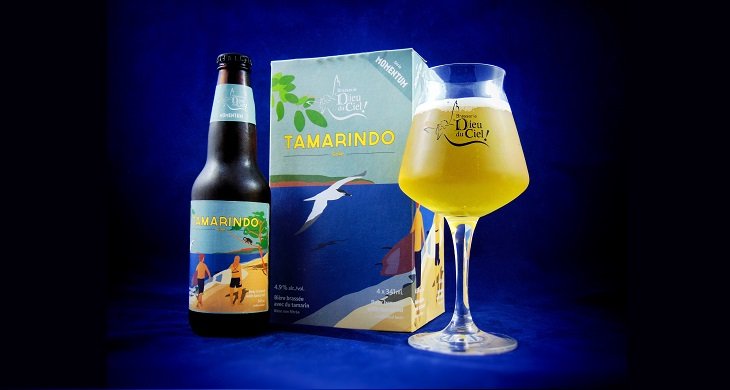
Birders are quite possibly the only hobbyists who get really excited about oncoming hurricanes, except maybe for the small number of severe weather enthusiasts – or “storm chasers” – who follow tropical cyclones rather than the usual tornadoes. Every year along the Atlantic Coast of North America, from June to November, experienced birders anticipate the exciting possibility of finding rare, tempest-tossed seabirds blown in from the tropics far north of their usual range. Even birders away from the coast can luck out after a hurricane; once the immediate threat of a storm has passed, they know it’s time to check inland rivers, lakes, and reservoirs for any straggling seabirds unlucky enough to have gotten caught up in the furious winds and rains. The hapless Sooty Tern (Onychoprion fuscatus) is the classic hurricane bird, but other pelagic species are entrained in storms and blown ashore as well, like Bridled Terns (Onychoprion anaethetus), White-tailed Tropicbirds (Phaethon lepturus), and Magnificent Frigatebirds (Fregata magnificens).
When Hurricane Isaias blew through upstate New York earlier this month, I found myself hunkered down indoors at home in Albany during the nearly all-day downpour. But some other birders in the area made it out both that day and the following, and – sure enough, but still amazingly – two hurricane-driven Sooty Terns were reported just south of Albany over the Hudson River, a good 150 miles north of the Atlantic Ocean and several hundred miles away from northern limits of their usual range.
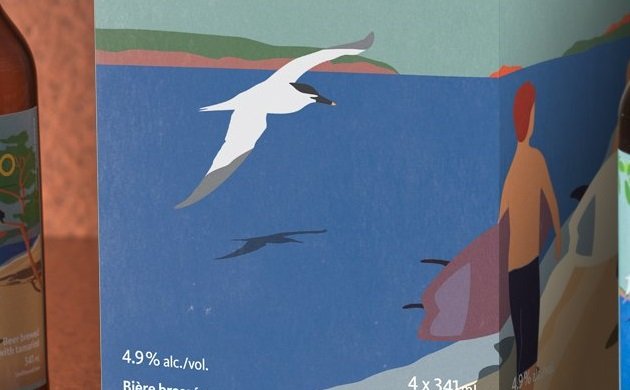
A close-up view of this week’s beer label, revealing the tell-tale, yellow-tipped bill of this black-capped, white tern.
So, while I missed out on any Isaias rarities, this week’s featured beer offers some consolation. Admittedly, I nearly overlooked the bird on the bottle of Tamarindo Gose by Montreal’s Brasserie Dieu du Ciel! when I first saw it on the shelf, but off to the side of a tropical island scene painted on the label flies a nearly all-white tern with a black cap. There are a few species in the subfamily Sterninae that fit that description, and while I was going to buy the bottle anyway, I assumed I’d have to leave the tern unidentified (and it’s almost as disappointing having to do this with our birds on booze as it is with real birds). But then I noticed that the very end of this tern’s black bill – barely discernible against the pale blue sky – is yellow. While I don’t have a lot of experience with tropical terns, I believe that narrows it down to Sandwich Tern (Thalasseus sandvicensis), a bird that – while still quite rare in the Northeast – seems to be occurring with greater frequency, along with an increasingly northward incursion of Royal Terns (Thalasseus maximus).
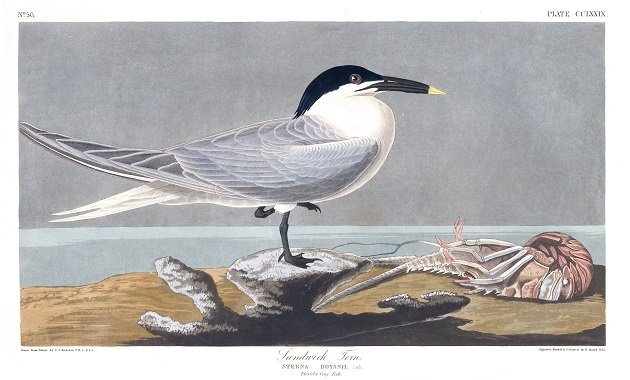
A Sandwich Tern (Thalasseus sandvicensis) depicted in Birds of America by American ornithologist and painter John James Audubon (1785-1851).
Well, we seem to have this tern figured out, but what about the odd name of this week’s beer? Tamarindo Gose? Well, in a linguistic collision that could only come out of early 21st-century craft brewing, tamarindo – the Spanish word for “tamarind”, the tangy, pulpy tropical fruit – meets Gose, a once obscure sour and salty German wheat beer hailing from Leipzig that’s become a serious summer beer fad among American craft brewers in the last few years (our only previous encounter with Gose at Birds and Booze can be found here). The original East German Gose is a simple but patently refreshing brew made with malted wheat and barley, perhaps some coriander, a sprinkle of salt, and soured with a mixed culture fermentation using both brewing yeast and lactic acid bacteria. But latter-day New World versions buck steadfast Teutonic traditions with inspired additions of fruit that have turned this old mainstay of Leipzig taverns into the perfect summer beach chair beer. Whether it’s citrus, berries, melon, or sweet, fleshy tropical produce like mango and papaya, Leipziger Gose tends to play very well with fruits that enhance its tangy and subtly saline sea breeze flavors. But this is the first time I’ve seen a tamarind Gose – or a tamarind beer of any style, for that matter.
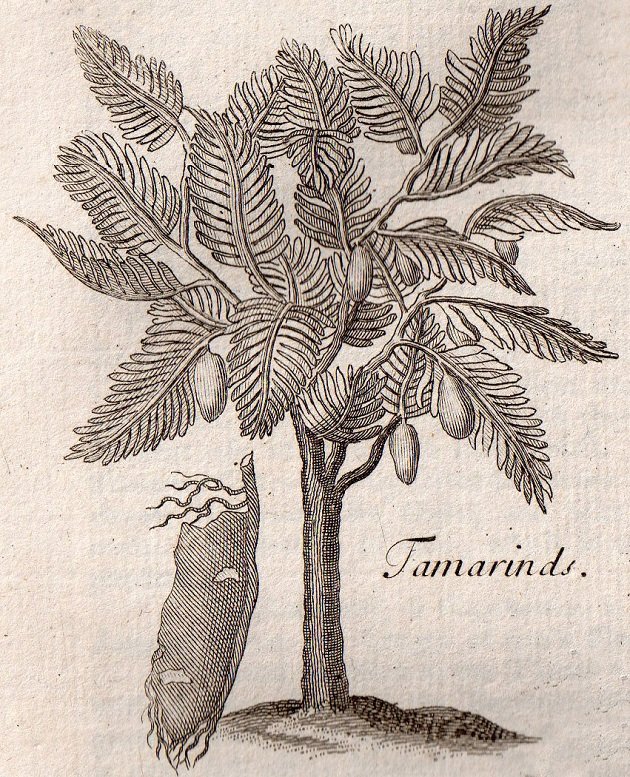
A tamarind tree in an engraving from Histoire générale des drogues (“General History of Drugs”) by French pharmacist Pierre Pomet (1658-1799), from an English translation of 1714.
Tamarind (Tamarindus indica) is a real odd duck of a fruit: it grows on a tree belonging to the family Fabaceae, making it a relative of peas, beans, and legumes. Tamarind seems to have originated in Africa, though it’s now grown around the world in the tropics, and its soft, fleshy, sweet-and-sour fruit has been readily adopted by many cuisines. It’s highly prized in India for chutneys, made into a tart, refreshing agua fresca in Mexico, and also goes into the hodge-podge of ingredients that make up the fermented fish sauce that made Worcestershire, England famous, to note just a few of its many and sometimes clandestine uses.
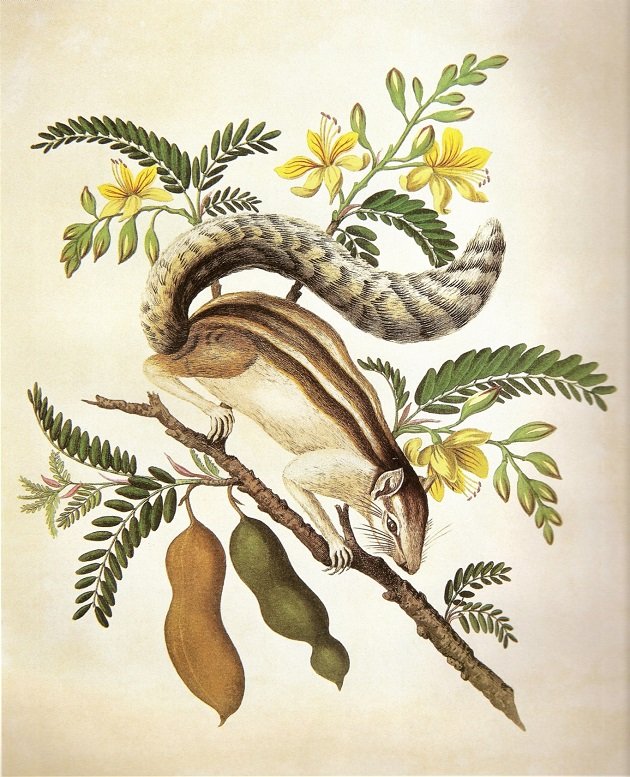
“The Common Striped Squirrel (Palm Squirrel) Funambulus palmarum on a Tamarind Tree” from Oriental Memoirs, Vol. III (1812-13), by James Forbes (1749-1819), a prolific British artist and author who traveled widely in India during the colonial era. This plate was drawn and painted in Bombay around 1779.
Still, tamarind is hardly commonplace brewing ingredient and Dieu du Ciel! has entered real uncharted waters using it to flavor a Gose. Or perhaps the brewery just let itself get blown wildly off-course by the sometimes hurricane-like forces of brewing innovation these days. Either way, it works. The generous amount of sweet-and-sour fruit that goes into Tamarindo Gose tints this beer a pretty light brown shade of iced tea and gives it a wholly unusual aroma that’s by turns tart, salty, and earthy. This beer is full of tangy, summertime tastes: light, bright, and lemony with some sweet vanilla, a bit of wheat, and a slight but refreshing brininess. It’s like an Arnold Palmer spiked with a dash of tropical tamarind, combined with the savory saltiness of a good margarita in which the bracing brine arouses the the beer’s sweet and sour flavors.
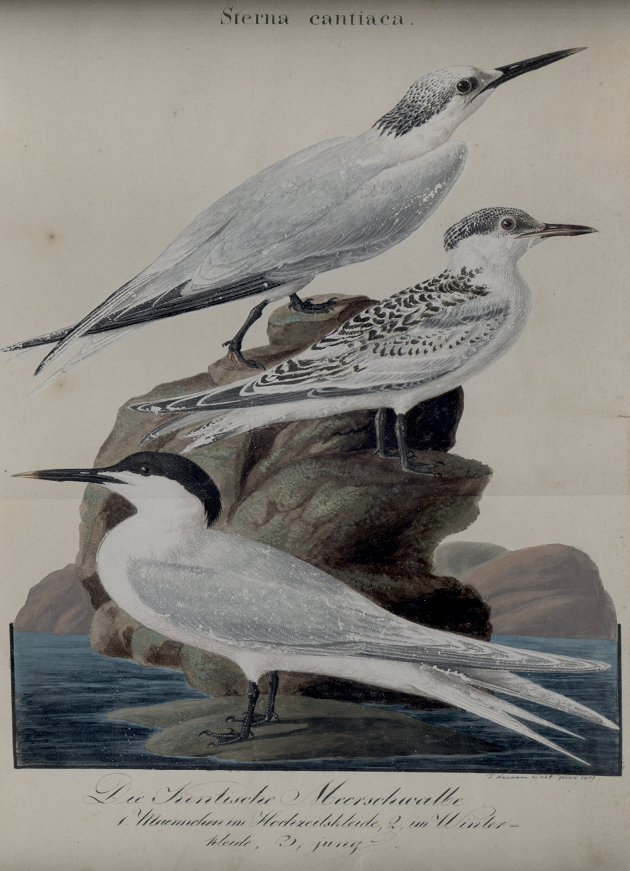
“Die Kentische Meerschwalbe (Sterna cantiaca)”, depicting Sandwich Terns of various ages in a plate published in 1817 by German ornithologist and engraver Johann Friedrich Naumann (1780-1857).
Hurricane season is still far from over, so if you do any storm-birding in the next few weeks, stay safe. Or just stay indoors and enjoy a good summer beer like Tamarindo Gose.
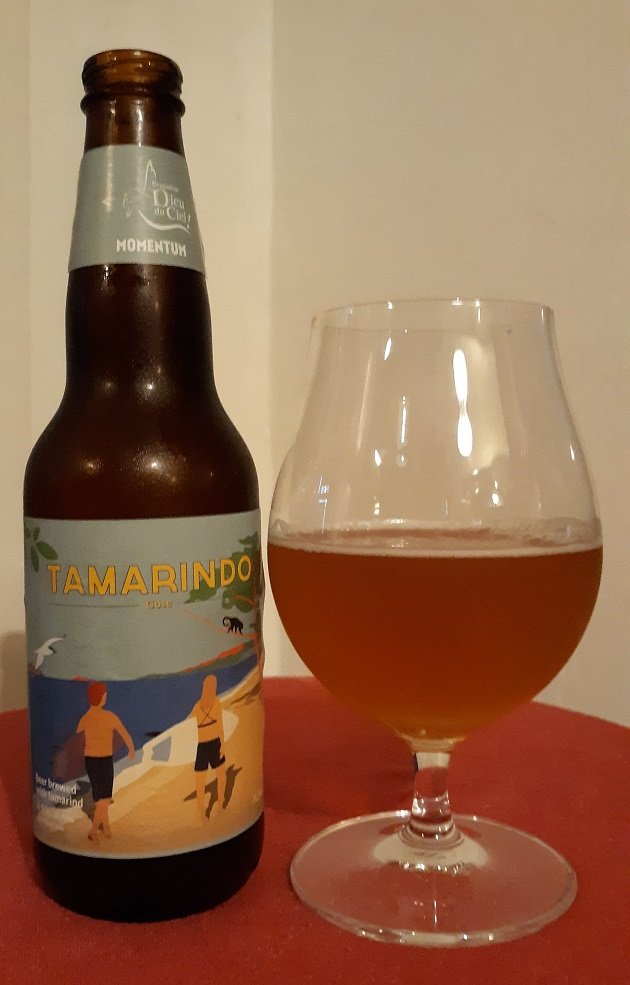
Good birding and happy drinking!
Brasserie Dieu du Ciel!: Tamarindo Gose
![]()
![]()
![]()
![]()
![]()
Three out of five feathers (Good).













Leave a Comment